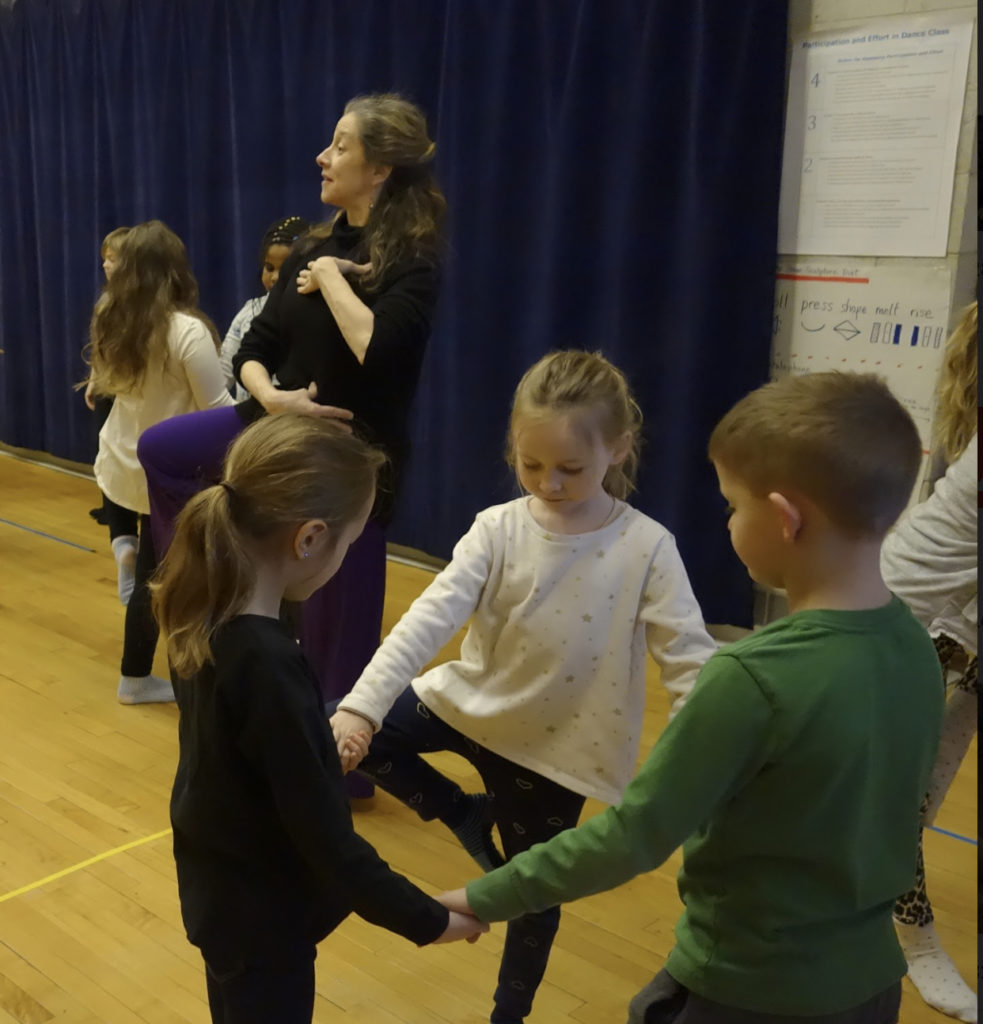
It’s no exaggeration to say that dance literally gave Catherine Gallant her voice. “We didn’t have this term at the time, but as a child I was selectively mute,” she says. “I didn’t speak outside of my home until I was 12 years old”—which, not coincidentally, is around the time when young Gallant began taking ballroom-dancing lessons. “Entering into dance slowly gave me my voice,” she adds. “And as I kept dancing, I started talking and feeling more confident.”
Nowadays, as a dance educator at Public School 89 in lower Manhattan, Gallant guides young dancers to discover their own voices through dance. Her work through the New York City Department of Education was even highlighted in the Emmy-nominated documentary PS DANCE! Gallant also creates her own work with Catherine Gallant/DANCE and is a respected authority on the Isadora Duncan artistic legacy.
What do you like most about teaching at PS 89?
The teachers there are all artists in and of themselves within the art of teaching. They look at their work reflectively. There’s a lot of collegial respect, for teachers, staff, students and families. It’s a place where people have a lot of respect for each other and are open to learning from and collaborating with each other.

What is the biggest challenge you’ve experienced working with today’s generation? How do you work through these challenges?
Helping students find their self-regulation, sustain focus and attention, and respect each other. I’m finding all of that more challenging than when students were in their home spaces. We’re only now getting back to that real sense of accountability that comes out of sharing the space with each other. Social/emotional learning is a big deal at school right now. We’ve all had extra training in how to express how you’re really feeling in the moment, because there’s still anxiety in negotiating and navigating that the best we can.
What’s the best and worst advice you’ve ever been given as a dance educator?
I’ll start with the worst: “Don’t smile.” I don’t even know if I ever tried it, because it felt so unnatural and inauthentic. Students need to feel that you’re happy to be with them. I understand that maybe it’s a self-defense for teachers who feel vulnerable, but I don’t know how never smiling would be useful to anyone.
For me, the best advice has been about listening to the students. Sometimes as the teacher, we come in with a plan of things we want to accomplish. Of course, that agenda doesn’t always go with where students are. It’s about using your intuition and listening to what the students physically and kinesthetically need (not necessarily what they want), from you and from each other. Is this the day we need to start lying down and relaxing instead of putting that at the end? In dance, it’s not just about listening to what someone says, but also listening to movement and energy—and not being afraid to change your plan.

Who is your biggest role model in the dance education field?
I would have to say Jody Arnhold, who is the director and founder of the Dance Education Laboratory. She’s been a mentor to me and I’ve been a student in her courses at DEL. Of course, all the people that I’ve studied with have been really important to me in my development as an educator.
What message do you have for today’s dance educators who are continually working to inspire and empower the next generation?
Never give up. It can become very challenging if you’re the only dance educator in the school. You can often become isolated until those periodic times when you connect with others, like at a professional development program or in a workshop. Don’t let yourself feel alone. Never give up on your own teaching, and also continue to be an advocate for dance in general.

What is one “thing” that makes you and your teaching style unique?
I consider everything to be an experiment. We do a lot of improvisation within our work at school, when I’m working with other teachers, and even in my own choreography. I love including the ideas of dancers, and we often use the strategic approaches of Merce Cunningham around the use of chance.
Chance can be very exciting! You can roll dice, pick cards, spin a wheel. You can also get apps on your SMART Board to do those things. We use chance as a motivator to make choices we wouldn’t otherwise make, and also to get out of our own way when making dances. When we wake up in the morning, we’re all improvisers. We don’t have our whole day mapped out. We’re dealing with chance encounters every moment. So I like to fold that into my teaching style.
What’s on your career bucket list?
We did get to perform at the Edinburgh Festival Fringe this past summer, which was kind of a bucket-list thing! I’d also like to do a cross-country tour by train, stopping in small venues across the country to do my solo program.





